Hey guys,
I'm continuing with my series about Rostock. And I would like to introduce you to one of the most famous sights in Rostock: The Kröpeliner Tor.
The Kröpeliner Tor is one of the four large gates of the Rostock city fortifications. In my last post I told you about the Stone Gate, which is also one of the four gates. The other two gates are the Kuhtor and the Mönchentor. I'll tell you more about these gates another time.
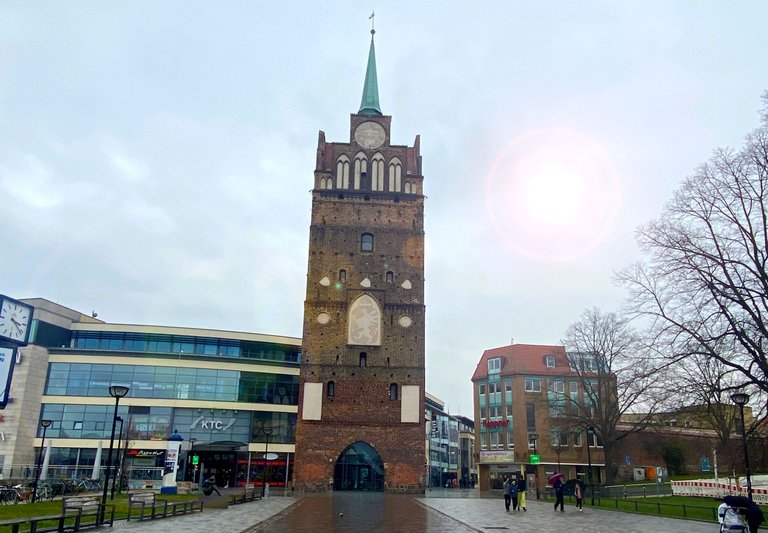
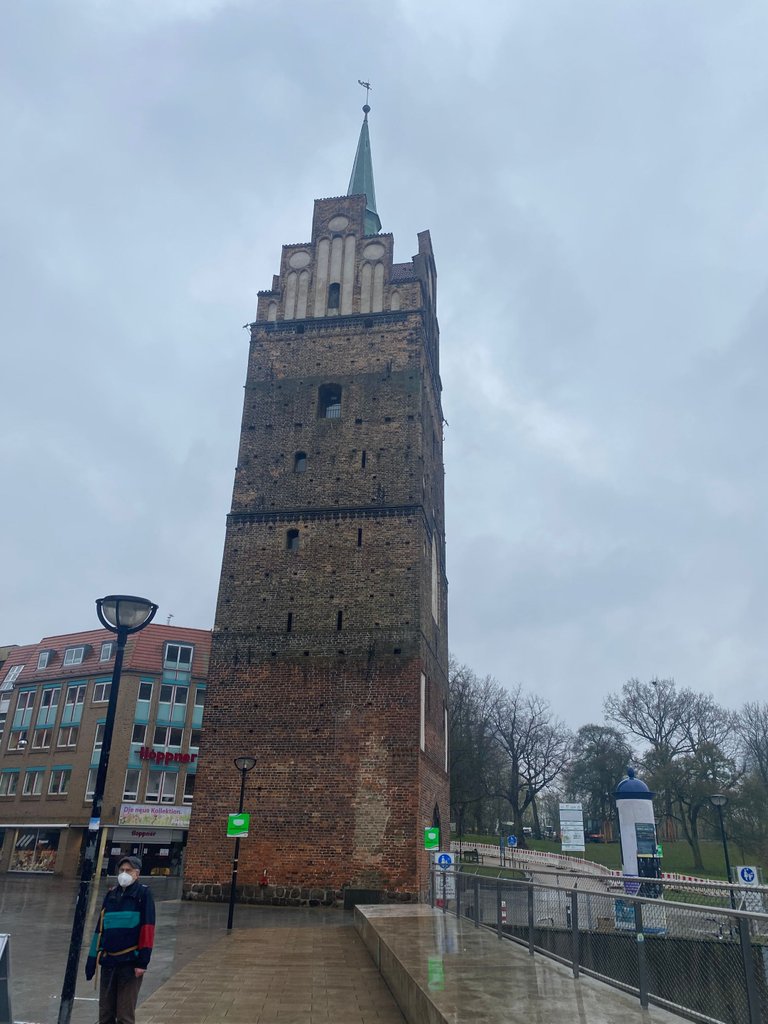
The Kröpelin Gate is the most western of the four large gates. It was built in 1270 in the Gothic style.
It was already very well known in Rostock at that time. Although there were 22 city gates at that time, it was one of the largest and most massive of all city gates. It has two storeys, which was a lot for a city gate at that time.
Why was it named Kröpelin Gate? Opinions are divided on this today. One theory is that it was named after the small town of Kröpelin, in whose direction it leads. According to another theory, it was named after a patrician family that bore the same name. I rather believe in the first theory ;).
The gate is the western end of Kröpeliner Straße.
Over the centuries, the gate has not only changed its appearance, but also its purpose and "use".
Today, the Kröpelin Gate is a listed building and is used as an exhibition and meeting space.
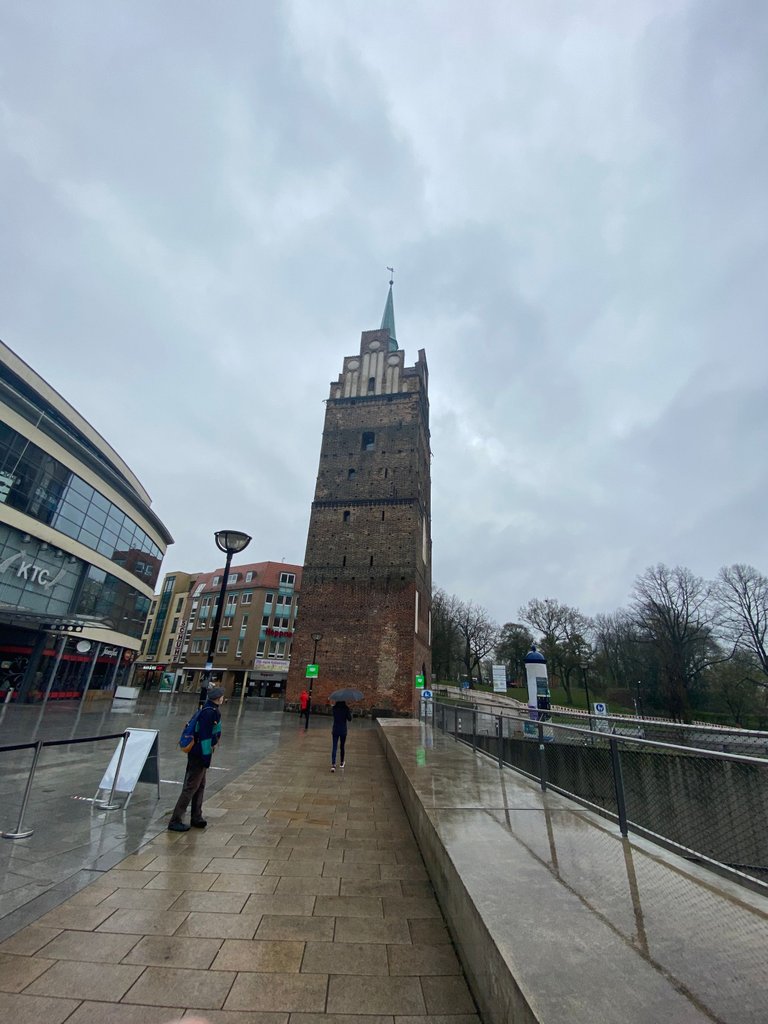
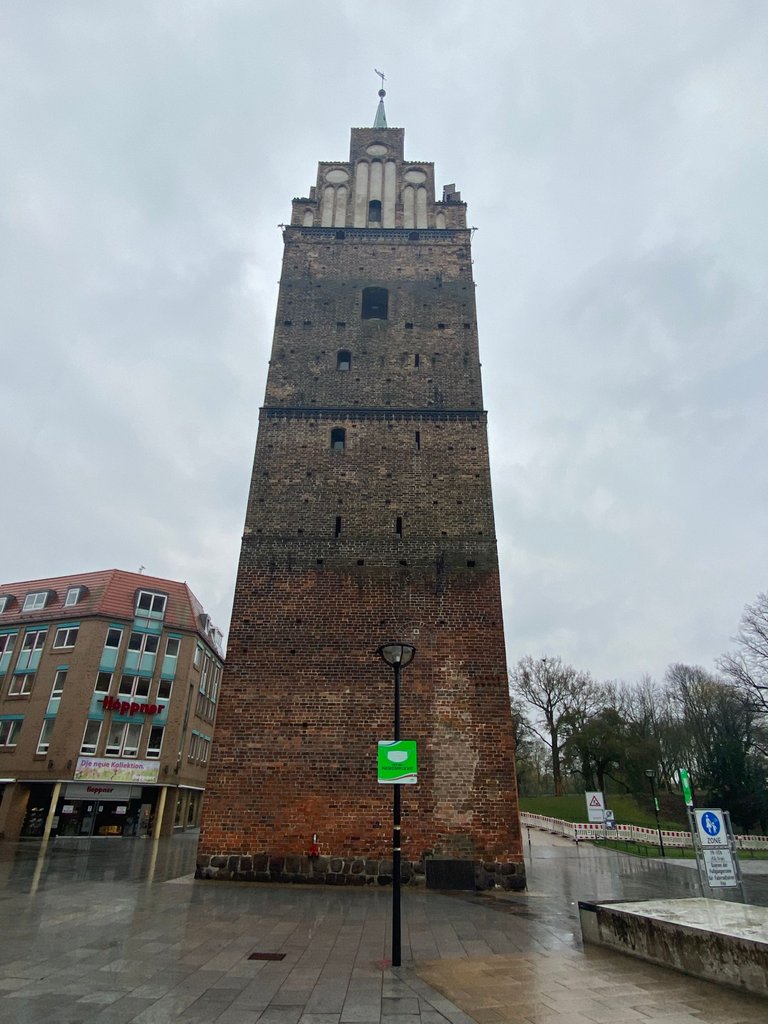
The Brick Gothic
I liked the gate incredibly much. It stands in the middle of a street leading away from the centre. Across the street is a major shopping centre with shops like H&M, Zara and McDonalds. Next to the gate, away from the centre, a park begins on the left, and on the right there is also a little green. At the very beginning, I thought the gate was out of place. It stands in the middle of a street, the shopping street in Rostock. In the meantime, however, I like the gate more and more. Firstly, because it represents a kind of conclusion to the big shopping mile. After that you get to less turbulent parts of the city. And secondly, because the gate is extremely striking with its construction and architecture. The gate is considered one of the most beautifully preserved Gothic architectural monuments in the whole of Rostock. I love the contrast with the modern shopping centre across the street.
The gate was built in the 13th century. At a time when the city wall was also built around the then three sub-towns.
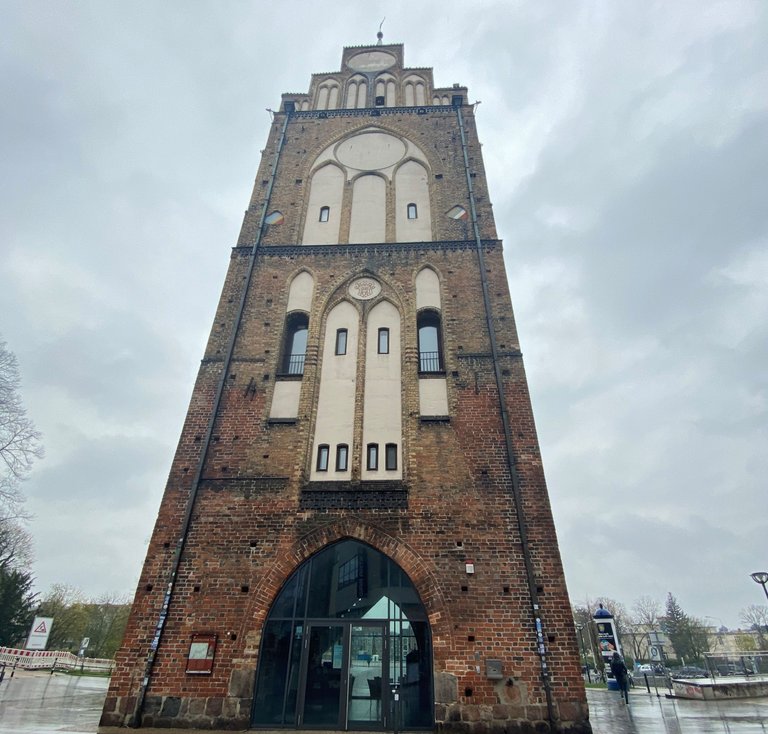
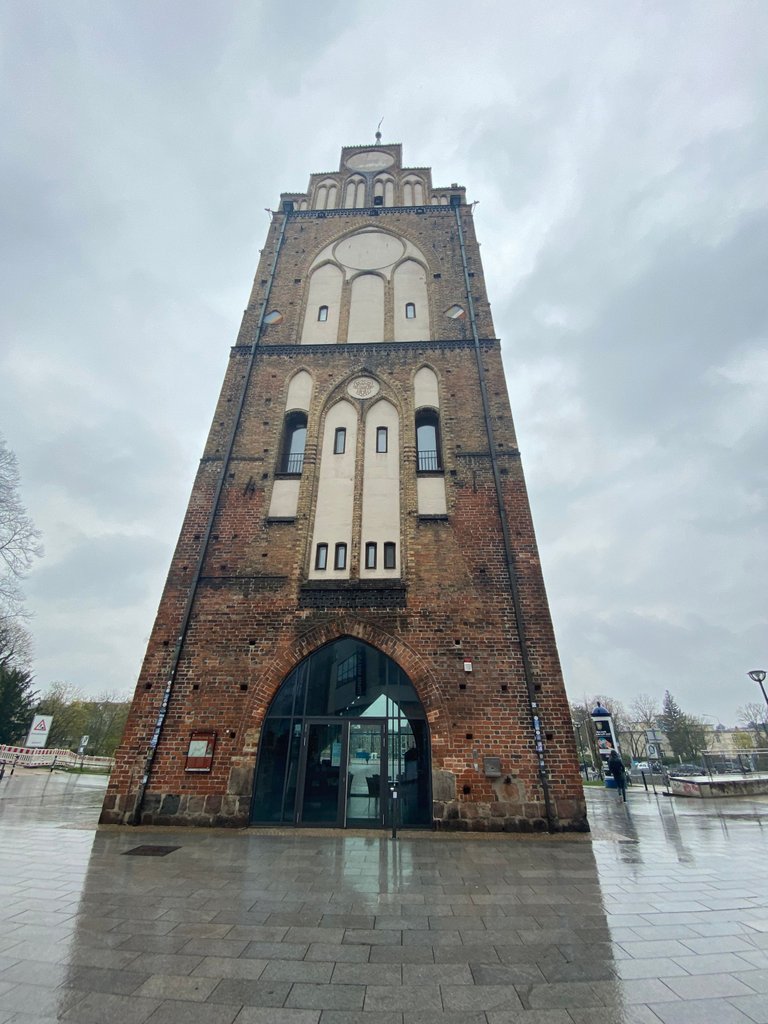
Originally, the gate was built with only two storeys. Its sole purpose was to defend the city.
Around 1400, however, defence strategies increasingly changed and weapons were reinvented and used differently. The fortification, the Kröpelin Gate, had to be rebuilt, or more precisely reinforced, to withstand enemies.
The gate was mainly to be given better gunner positions and more storage space. To this end, it was raised to six storeys. A wooden battlement was also added. The early Gothic walls can now only be admired in part. Only about 10 metres of them remain. You can recognise it by the dark, heavily red bricks above the granite base.
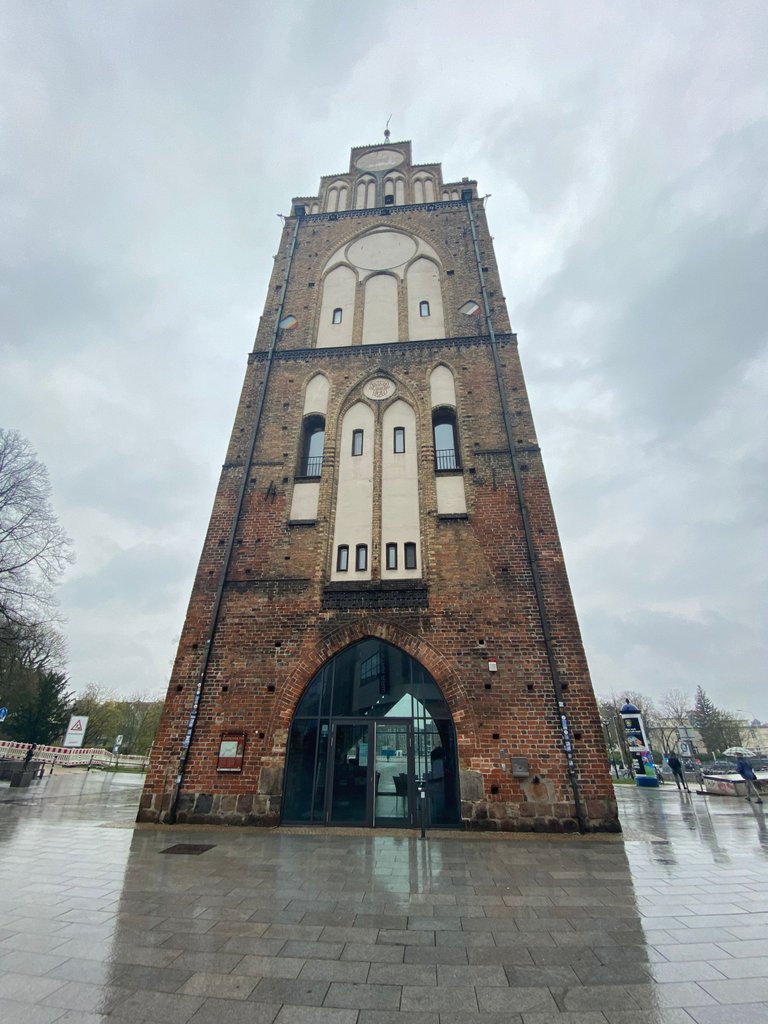
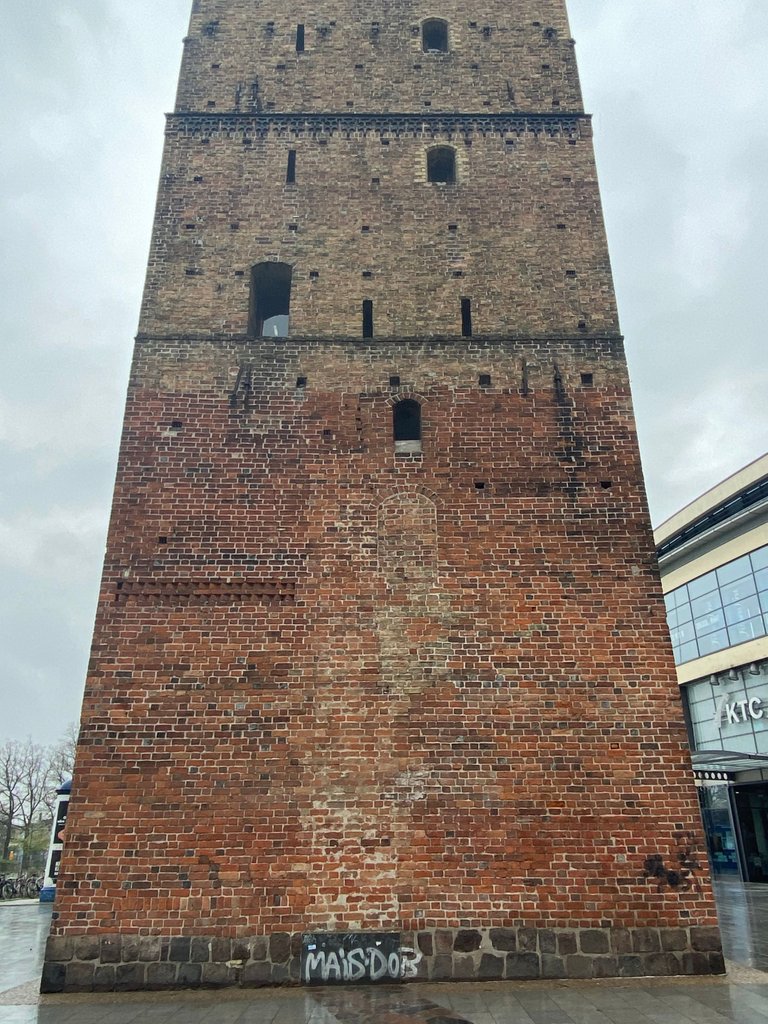
Over the next centuries, the gate was repeatedly modified. As you can see from the Stone Gate, where the city side was beautifully kept, the Kröpelin Gate was also intended to serve not only as a defence during times of prosperity. It was also intended to represent wealth and prosperity.
That is why ornamental panels and staggered ornamental gables were added.
During the Thirty Years' War, there were again architectural changes, then again some that were intended to serve defence purposes. In front of the gate came a stone bridge gate, a gun emplacement with breastwork and a ditch system. This meant that the battlement was no longer needed, so it was removed again. In the 18th century, the defence ring was also partly removed.
Because the Kröpelin Gate has such historical significance, it was fortunately never demolished. During the Second World War, the gate was not destroyed, but the annexes were damaged. After the end of the Second World War, a large part of the city wall was removed. As a result, the part of the city wall that exists now no longer comes close to the gate.
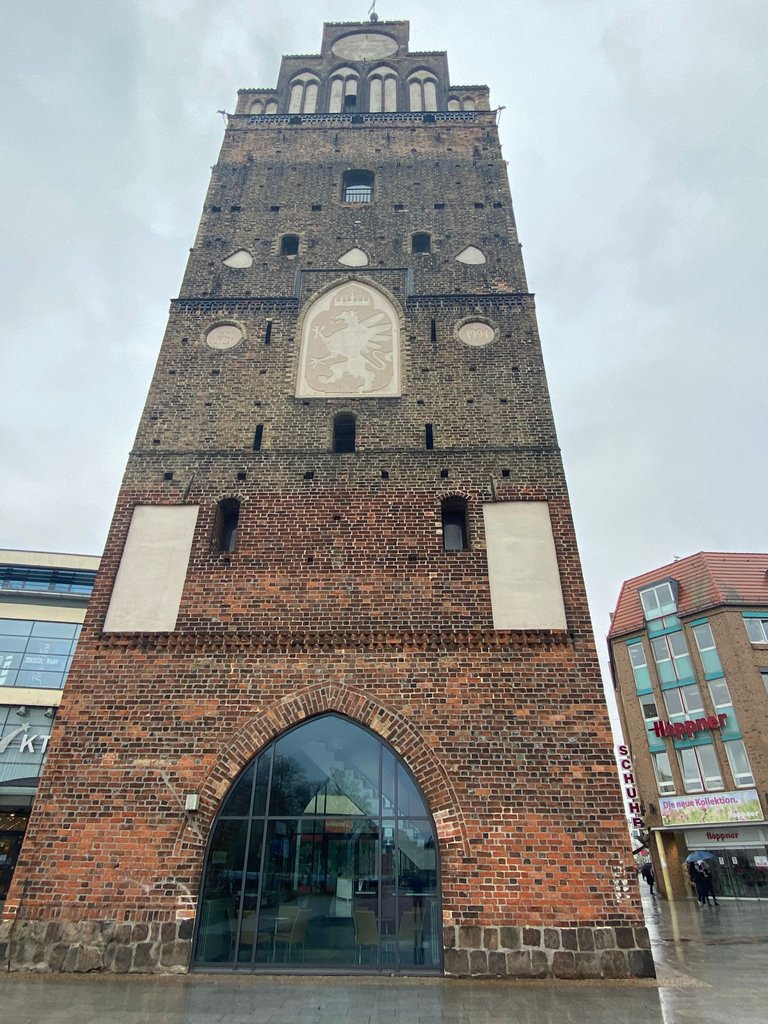

Today there are city exhibitions in the gate (unfortunately I can't show them to you at the moment because of Corona). The exhibitions are shown on five floors. Stairs lead to them.
The upper floors 1 to 3 are used for temporary exhibitions. On the two upper floors, there is a permanent exhibition. This shows the development of the city's fortifications.

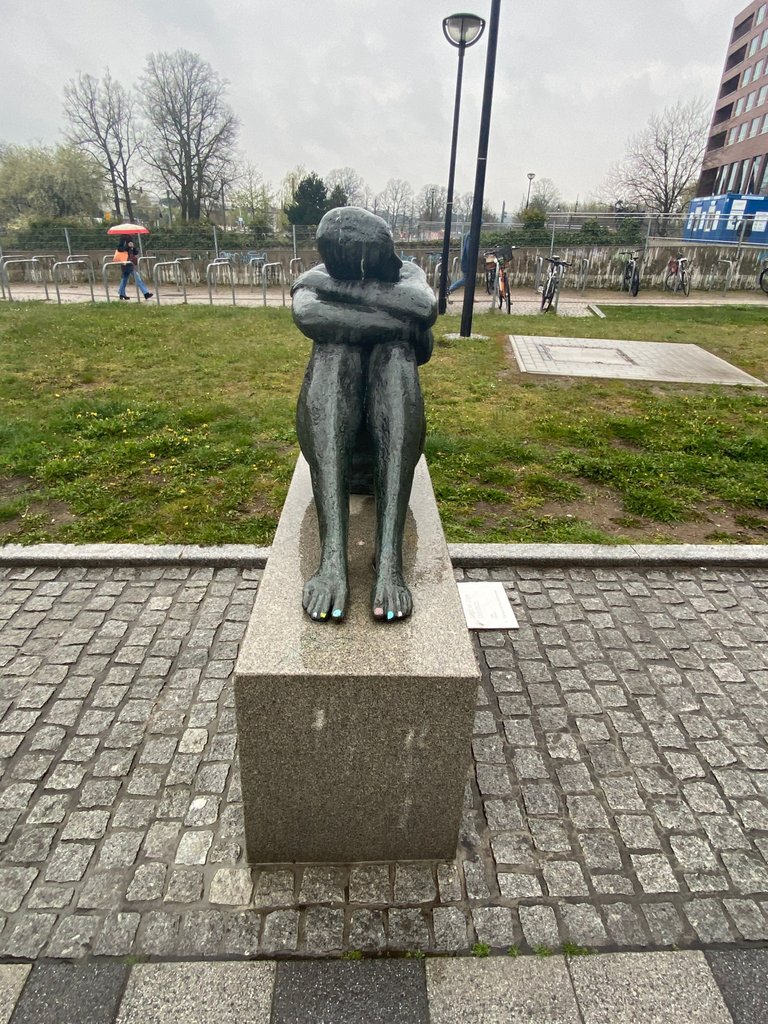
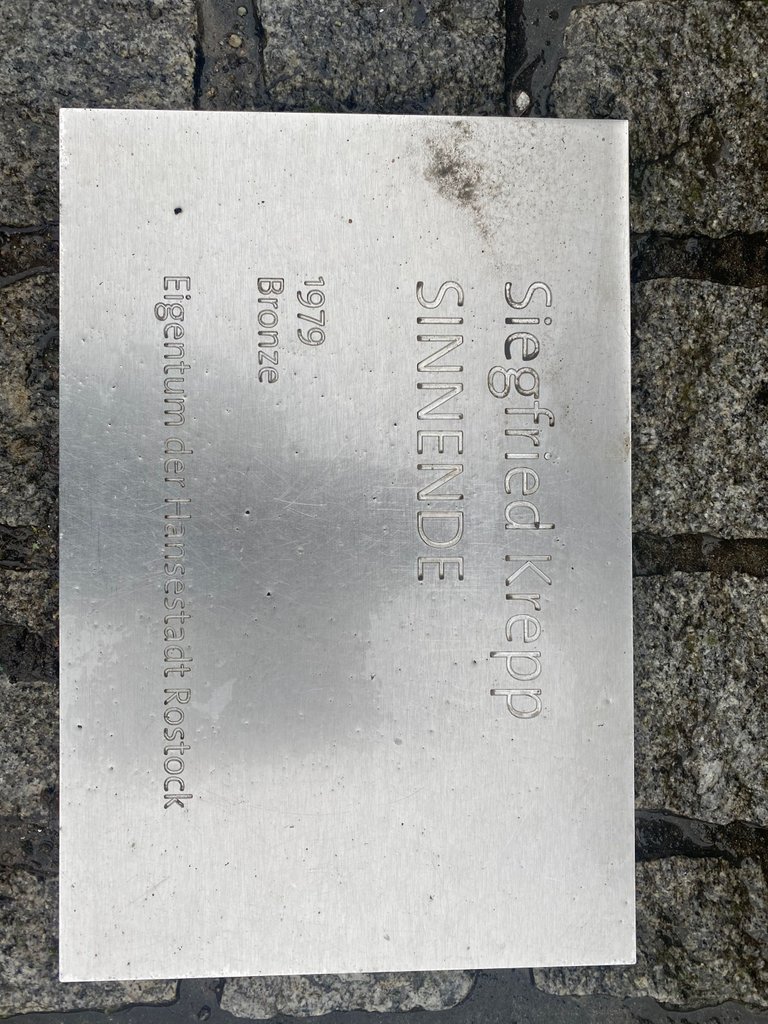
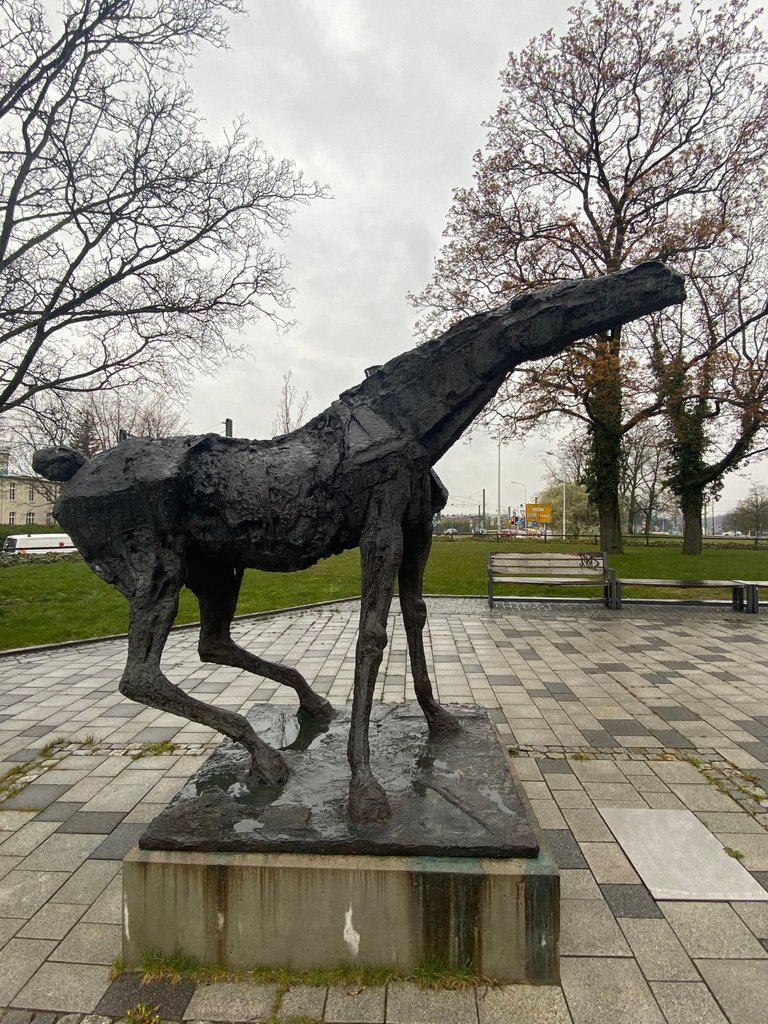
Here you can see several sculptures that stand not far from the Kröpelin Gate: On the first photo you can see the sculpture "Girl with a Bouquet of Flowers". It was created by the Norwegian sculptor Ada Madssen in 1972 and you have to get closer to see the bouquet of flowers. The sculpture is made of bronze.
Not directly next to it, but in the immediate vicinity, is another bronze figure, this time of a woman. She thoughtfully rests her head on her arms. Her name is "Sinnende" and she was created in 1979 by Siegfried Krepp.
I have already shown you the "Screaming Stallion" in another. It is rather in contrast to the very calm-looking figures. This sculpture is also made of bronze. It is by the Rostock sculptor Jo Jastram. The plaque reads: "Symbol and reminder of all maltreated creatures on earth". However, it is only a copy.
I hope you enjoyed the post, feel free to write your feedback in the comments!
Amazing pictures 😍😍
Thank you so much!:)
Welcome mam
Congratulations @katrin-lux! You have completed the following achievement on the Hive blockchain and have been rewarded with new badge(s) :
Your next target is to reach 23000 upvotes.
You can view your badges on your board and compare yourself to others in the Ranking
If you no longer want to receive notifications, reply to this comment with the word
STOPCheck out the last post from @hivebuzz:
Support the HiveBuzz project. Vote for our proposal!
Congratulations, your post has been added to Pinmapple! 🎉🥳🍍
Did you know you have your own profile map?
And every post has their own map too!
Want to have your post on the map too?